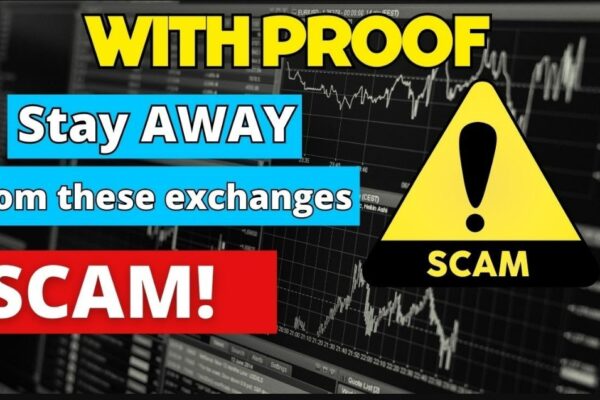PrimeTradingMarket.com Review -The Illusion of Opportunity
The internet is a vast bazaar of opportunity, yet it is also a wilderness populated by increasingly sophisticated traps. In the realm of investment and digital assets, the boundary between a legitimate trading platform and a calculated financial fraud is often razor-thin, relying entirely on the consumer’s ability to spot the signs of manipulation. Our focus today is on a specific online entity, Primetradingmarket.com, and the multitude of critical red flags that surround it.
This is not a review of a minor technical glitch or poor customer service; it is an in-depth analysis of a domain that appears to embody the classic, destructive architecture of an advanced financial scam. Based on the domain’s appearance, common industry patterns, and public warnings associated with similar “Prime Market Trading” entities, we must approach this platform with the maximum level of skepticism and professional caution.
The very name—Prime Trading Market—is designed to exude instant credibility, blending authoritative words like “Prime” and “Market” to create a psychological association with major, established financial institutions. However, an analysis of the site’s structure, the nature of its claims, and its digital footprint reveals a narrative far more aligned with deception than with legitimate investment.
The Regulatory Chasm: A Matter of Authority and Safety
The single most critical piece of due diligence for any investment platform is regulatory status. Legitimate trading markets, brokerages, and investment management firms are subject to rigorous oversight by government-backed financial authorities (such as the SEC, FCA, ASIC, and FINRA). This regulation is the consumer’s only meaningful protection against fraud, insolvency, and malpractice.
The Unauthorised Firm Paradox
A preliminary assessment of the wider landscape shows that financial regulators have previously issued warnings against entities using very similar “Prime Market” branding. For instance, the warning issued by the Washington State Department of Financial Institutions concerning a related site, and the various warnings against similarly named brokers like PRIMARKETS or Prime Markets from major global regulators, underscore a pattern of unauthorized financial activity and brand mimicry within this sector.
What Unregulated Status Means for Your Funds
When a platform operates without top-tier regulatory authority, it means:
- No Recourse: If the company freezes your account, blocks a withdrawal, or simply disappears, you have no financial ombudsman or governmental body to compel them to return your funds. You are operating outside the legal safety net.
- Zero Deposit Protection: Regulated brokers are usually required to participate in compensation schemes (like the Financial Services Compensation Scheme or SIPC insurance) which offer protection up to a certain financial limit if the company goes bankrupt. Unregulated sites offer no such security.
- Financial Wild West: Without oversight, the platform is free to manipulate trade results, charge undisclosed fees, liquidate accounts unfairly, or simply display fabricated profit numbers on their internal dashboards—all without accountability. The displayed balance is merely a number in a database, not a reflection of segregated, real-world assets.
The claims of being “featured by popular entities like Forbes and CNBC,” often seen on such sites, are themselves a classic confidence trick. These logos are frequently copied or digitally inserted without permission, attempting to establish an instant, false veneer of mainstream approval. Trust should always be earned through verifiable, official regulatory documentation, not borrowed imagery.
The Script of the Scam: High-Yield, High-Pressure Fraud
The business model of domains like Primetradingmarket.com often aligns with two pervasive forms of financial fraud: High-Yield Investment Programs (HYIPs) and the highly manipulative Advance Fee Fraud (often facilitated through “pig butchering” schemes).
1. The Myth of “No Loss” Guarantees
The claim of a “0 loss” guarantee, as noted in public complaints related to similar operations, is perhaps the clearest indication of fraud. In legitimate finance, there is no such thing as a risk-free, guaranteed return, especially in volatile markets like cryptocurrency, forex, or futures. Guaranteed high yields, or fixed daily/weekly returns on short-term deposits, are the hallmark of a Ponzi scheme. These platforms simply use new investor money to pay out the initial, small “profits” to earlier investors (or to the victim’s own small test withdrawal), creating the illusion of a profitable trade.
2. The Advance Fee Trap
The pressure to inject more capital to “activate” an account or prevent a loss is a critical, manipulative tactic. The complaint that a user was told they must invest an additional sum or lose everything exposes the site’s true purpose: getting the victim to pay an advance fee to access promised money that does not exist.
The victim sees a huge “profit” displayed on their dashboard—perhaps thousands of dollars—but when they try to withdraw it, the platform demands a “tax,” an “insurance fee,” or a “mandatory compliance deposit” first. This demanded fee is the final goal of the fraud. The money is lost the moment it is deposited, and any subsequent fees are simply attempts to exploit the victim’s psychological desperation to recover their funds.
3. The Cloned Identity Problem
The discovery of several identical websites, such as those operating under the names “Octanex Global” or “ApexFxFinance,” reveals a crucial operational detail: these are not unique, stand-alone ventures. They are part of a network of disposable, templated websites.
- Ease of Replication: Scammers utilize professional-looking templates that allow them to swap out a company logo and name in minutes. When one domain is publicly exposed or shut down, they immediately launch a clone under a new, slightly altered name (e.g., PrimeMarketTrading.com becomes Primetradingmarket.com), ensuring their operations continue seamlessly.
- Lack of Differentiation: This cloning suggests a complete lack of proprietary technology or genuine trading infrastructure. The site is a front-end interface, not a functional exchange. The trade executions, charts, and balances are all simulated data controlled entirely by the operators to maximize the psychological effect on the user.
Digging Deeper: Forensic Red Flags of the Platform
Beyond the regulatory status and the social engineering, the technical and informational details of such a website often betray its nature.
The Vague, Aggressive Investment Structure
Legitimate investment requires transparency. Fraudulent sites offer only vague, overly simplified, and aggressively appealing “investment plans.” The plans advertised on similar scam sites often span short, high-yield durations, such as “72 hours to 30 days,” with deposits ranging from a small entry point up to substantial six-figure sums.
- Short Duration, High Yield: This short-term focus creates immense psychological urgency. The victim is encouraged to act now before the “opportunity” expires.
- One-Size-Fits-All: Real investment management is highly individualized and risk-assessed. These sites offer standardized, automated plans that require no real market knowledge, promising high returns regardless of global financial conditions. This automation is a disguise for the total lack of any real trading activity.
The Evasion of Contact and Identification
Legitimate financial businesses are required to provide transparent, verifiable physical addresses, corporate registration numbers, and readily accessible support channels. Scammer sites, by contrast, offer:
- Opaque Ownership: The corporate name used might be generic or, as is often the case, associated with an unrelated or defunct company (like the mention of “Octanex Global” in a related complaint).
- Ghost Contact Information: While a phone number or email may be provided, attempts to contact them often lead to unhelpful, evasive, or high-pressure responses from individuals acting as “account managers” whose primary role is to convince you to send more money. A genuine financial firm will never have an account manager whose main function is constant, aggressive upselling.
- No Senior Leadership Visibility: The names and faces of the executive team, if present at all, are often stock photos or stolen identities. Real brokerages highlight their experienced, licensed leadership.
The Reviewer’s Final Warning: A Digital Black Hole
The collective evidence strongly indicates that Primetradingmarket.com is operating under the same set of high-risk tactics used by a known network of financial frauds. It utilizes a powerful, recognized name (Prime Trading Market) to run an unauthorized investment platform that appears designed to trap users in an advance fee scam.
The promises of high profits, the pressure to deposit additional funds, the cloning of site infrastructure, and the complete lack of top-tier regulatory authority form an undeniable pattern of extreme financial danger. This platform is not a market; it is a digital black hole designed to absorb deposited funds without any corresponding legitimate trading activity.
The only safe investment strategy when encountering a domain like this is absolute avoidance. When in doubt, always default to the globally recognized, fully regulated platforms that have a long, verifiable history of operation and official governmental backing. Primetradingmarket.com and its numerous clones stand as stark reminders that in the online world, the best defense is unyielding skepticism.
Report PrimeTradingMarket.com Scam and Recover Your Funds
If you have lost money to PrimeTradingMarket.com Scam, it’s important to take action immediately. Report the scam to Jayen-consulting.com, a trusted platform that assists victims in recovering their stolen funds. The sooner you act, the better your chances of reclaiming your money and holding these fraudsters accountable.
Scam brokers like PrimeTradingMarket.com continue to target unsuspecting investors. Stay informed, avoid unregulated platforms, and report scams to protect yourself and others from financial fraud.
Stay smart. Stay safe.






